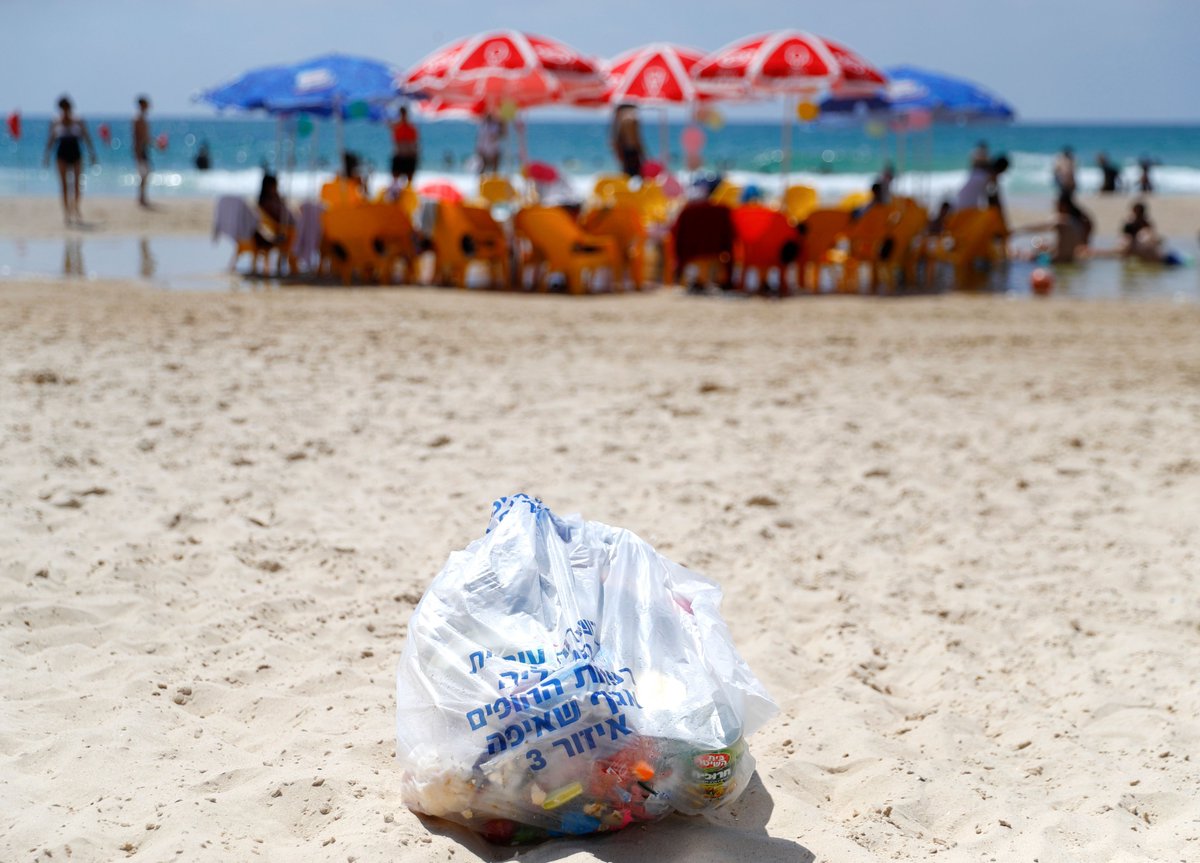
This year, retailers have declared war on an unlikely enemy: glitter.
The sparkly bits of plastic are being removed from gift bags, ornaments and other holiday baubles. But is a ban on glitter really going to save the environment? trib.al/ChQA7jJ
The sparkly bits of plastic are being removed from gift bags, ornaments and other holiday baubles. But is a ban on glitter really going to save the environment? trib.al/ChQA7jJ
It's not a crazy idea. Tiny pieces of plastic are indeed a threat to the environment, and retailers can make a difference in reducing them.
But doing so will require far more than banning a holiday staple trib.al/ChQA7jJ
But doing so will require far more than banning a holiday staple trib.al/ChQA7jJ

Plastic pollution, especially in the ocean, is typically associated with single-use items such as bags and straws.
But in recent years, scientists have also focused on the profusion of microplastics, which are about the size of a sesame seed or less trib.al/ChQA7jJ
But in recent years, scientists have also focused on the profusion of microplastics, which are about the size of a sesame seed or less trib.al/ChQA7jJ

Some microplastics are generated by the breakdown of larger products.
But a significant percentage are “primary microplastics,” such as synthetic clothing fibers, worn tire treads, and the microbeads used in products like toothpaste and body scrubs trib.al/ChQA7jJ
But a significant percentage are “primary microplastics,” such as synthetic clothing fibers, worn tire treads, and the microbeads used in products like toothpaste and body scrubs trib.al/ChQA7jJ

Humans release 1.5 million tons of primary microplastics into the ocean annually, a sum equivalent to one disgorged plastic bag for every person each week.
They make up as much as 31% of all ocean plastic, and turn up all over the marine environment trib.al/ChQA7jJ
They make up as much as 31% of all ocean plastic, and turn up all over the marine environment trib.al/ChQA7jJ

Just 2% of such plastics are derived from microbeads.
The leading source — at 35% — turned out to be clothes made from synthetic textiles (such as holiday-themed polar fleece pullovers. Glitter didn’t even make the list trib.al/ChQA7jJ
The leading source — at 35% — turned out to be clothes made from synthetic textiles (such as holiday-themed polar fleece pullovers. Glitter didn’t even make the list trib.al/ChQA7jJ

Yet somehow, glitter is now a pop-culture pariah:
🧸Daycares stopped carrying the substance
🎭TV shows eliminated glitter from costumes
🚫Retailers ban glitter from products
These efforts won't do much to reduce marine plastics trib.al/ChQA7jJ
🧸Daycares stopped carrying the substance
🎭TV shows eliminated glitter from costumes
🚫Retailers ban glitter from products
These efforts won't do much to reduce marine plastics trib.al/ChQA7jJ

Glitter bans offer retailers a way to burnish their environmental bona fides without having to alter how they operate.
Morrisons adopted its anti-glitter stance so customers enjoy the holidays “without worrying about the environmental impact” trib.al/ChQA7jJ
Morrisons adopted its anti-glitter stance so customers enjoy the holidays “without worrying about the environmental impact” trib.al/ChQA7jJ

Shoppers are unlikely to be fooled by such rhetoric for long.
As anti-plastic sentiment grows globally, consumers are already demanding sustainable products and shopping experiences trib.al/ChQA7jJ
As anti-plastic sentiment grows globally, consumers are already demanding sustainable products and shopping experiences trib.al/ChQA7jJ

The good news is that leading brands have acknowledged that their synthetic garments are a major source of plastic microfiber pollution:
🧥Patagonia
👟Adidas
👗H&M
Retailers could play an important role in amplifying that message trib.al/ChQA7jJ
🧥Patagonia
👟Adidas
👗H&M
Retailers could play an important role in amplifying that message trib.al/ChQA7jJ

Long-term, these efforts should pressure manufacturers into creating more sustainable products.
That won't bring back the once-beloved holiday glitter. But it'll ensure that retailers aren't just faking it when they say they're going green trib.al/ChQA7jJ
That won't bring back the once-beloved holiday glitter. But it'll ensure that retailers aren't just faking it when they say they're going green trib.al/ChQA7jJ

• • •
Missing some Tweet in this thread? You can try to
force a refresh













